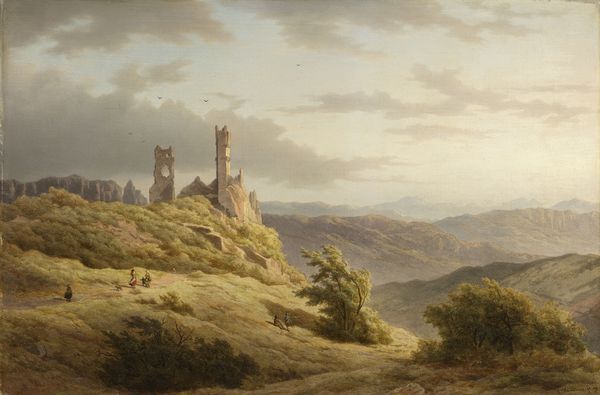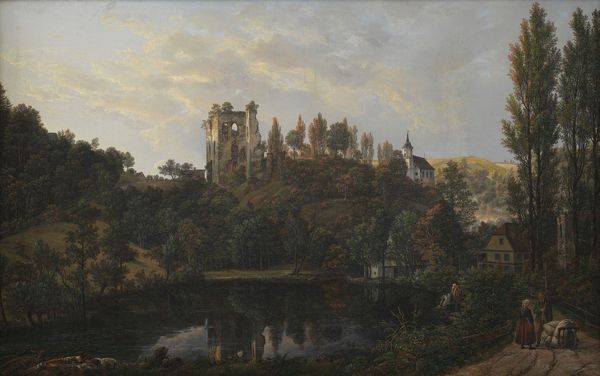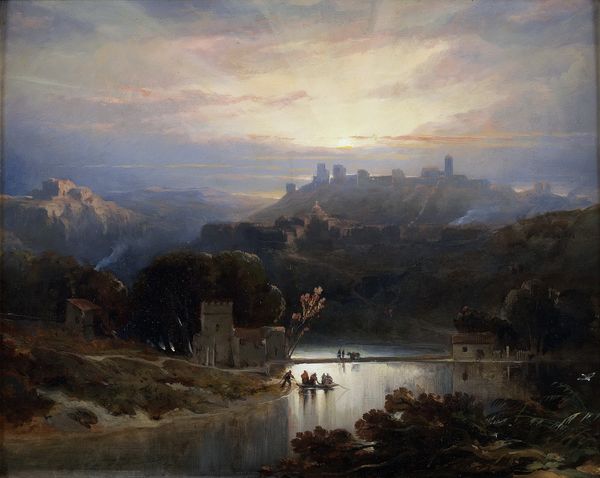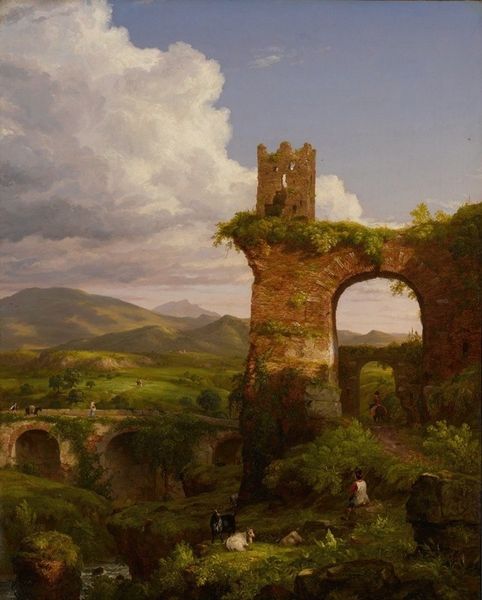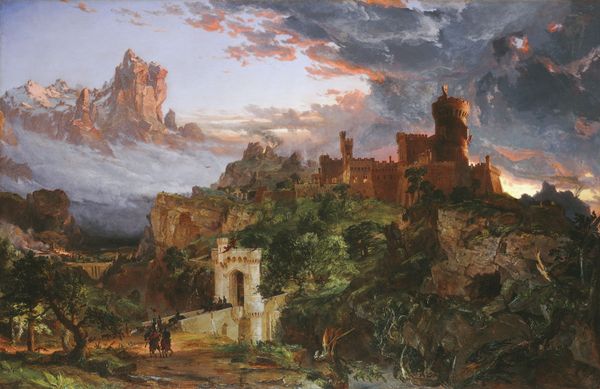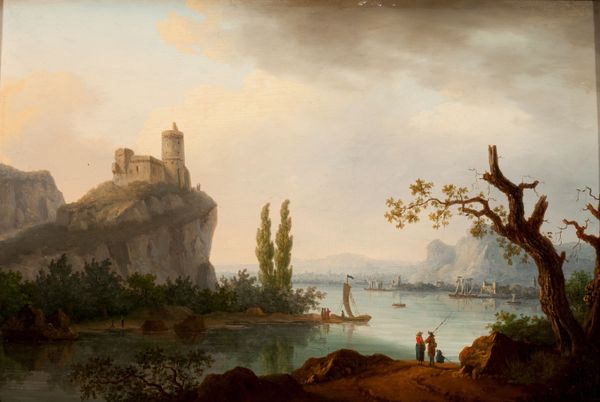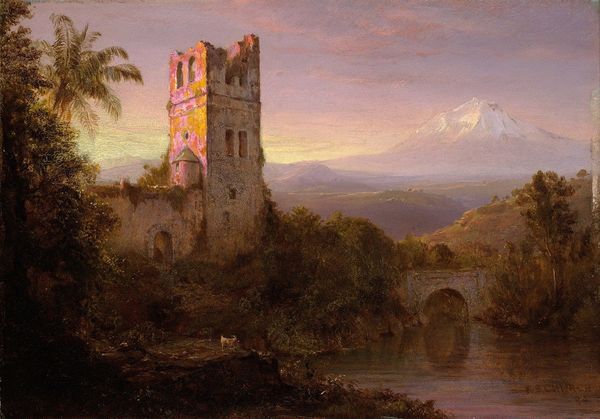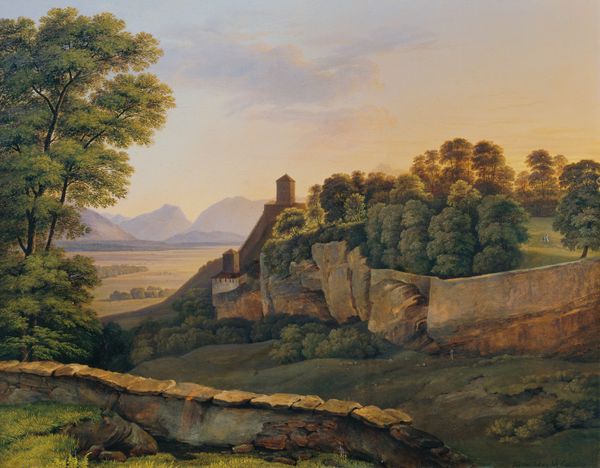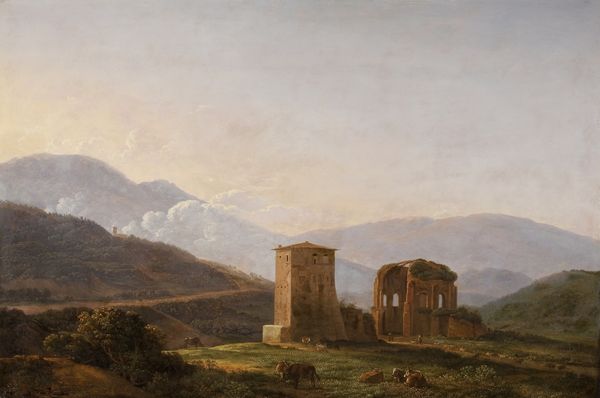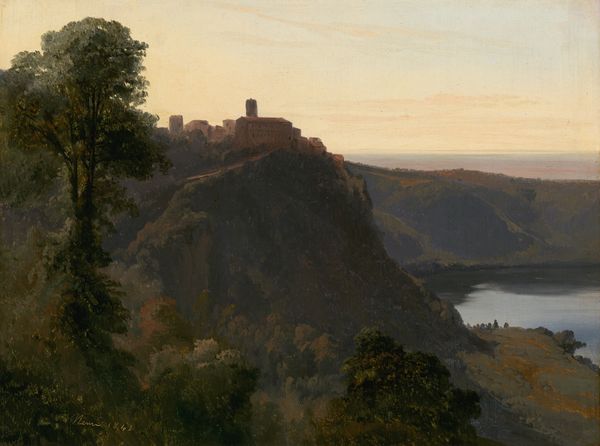
painting, oil-paint
#
tree
#
sky
#
painting
#
oil-paint
#
landscape
#
form
#
column
#
romanticism
#
cityscape
#
history-painting
#
sublime
Copyright: Public domain
Curator: "The Present" by Thomas Cole, painted in 1838, offers us a glimpse into Romanticism's fascination with landscape, history, and the sublime. You can find it here at the Mead Art Museum. Editor: It strikes me immediately as melancholic. The ruined architecture bathed in a kind of fading golden light evokes a powerful sense of loss and the transience of power. Curator: Absolutely. Cole, positioned as a key figure in the Hudson River School, was deeply concerned with the changing American landscape and the impact of progress on nature and civilization. This work, made with oil paint, in that sense presents a dialogue. The tower rising amid overgrown ruins is rife with art historical reference. Editor: I see it too. The ruin is clearly important. Columns peek through foliage. The scene reads to me as the aftermath of progress, an elegy for what was sacrificed. We might also recognize symbols that recall past civilizations brought to ruin like, the Tower of Babel and even the Roman Empire. Curator: That reading feels right to me, the artist engages with history painting on multiple levels. This feels so in keeping with feminist and post-colonial studies—histories written by those whose land and culture were overtaken or destroyed by the rise of power, capital, and industrialization. This period coincided with immense sociopolitical disruption from Western Colonialism, don't you think? Editor: I would agree, even the use of light and shadow serves to elevate these notions. The sunlight seems to emerge from the buildings like the last vestiges of a noble age and an acknowledgement of sublime endings. The imagery conjures cycles and patterns found universally through various belief systems—a kind of phoenix dynamism. Curator: The scale, though not immense, contributes to that sense of the sublime. Consider how the diminutive human figures at the painting's base compare with the grand architecture of ruin. This piece echoes so many ongoing global conversations—how we rebuild, and who we leave behind. Editor: Looking more closely now, I am interested in the animals drinking. Cole masterfully uses the symbolic image to evoke quiet hope after chaos, but he does not avoid depicting this past of civilization’s grandiose ambitions as ultimately doomed. Curator: So many aspects invite inquiry even today. These Romantic visions often act as a stage for future concerns. Editor: I am left contemplative as I absorb the totality. It feels relevant that this picture is both so deeply steeped in the visual languages of the past, and that is remains emotionally and thematically relevant in our "present."
Comments
No comments
Be the first to comment and join the conversation on the ultimate creative platform.
